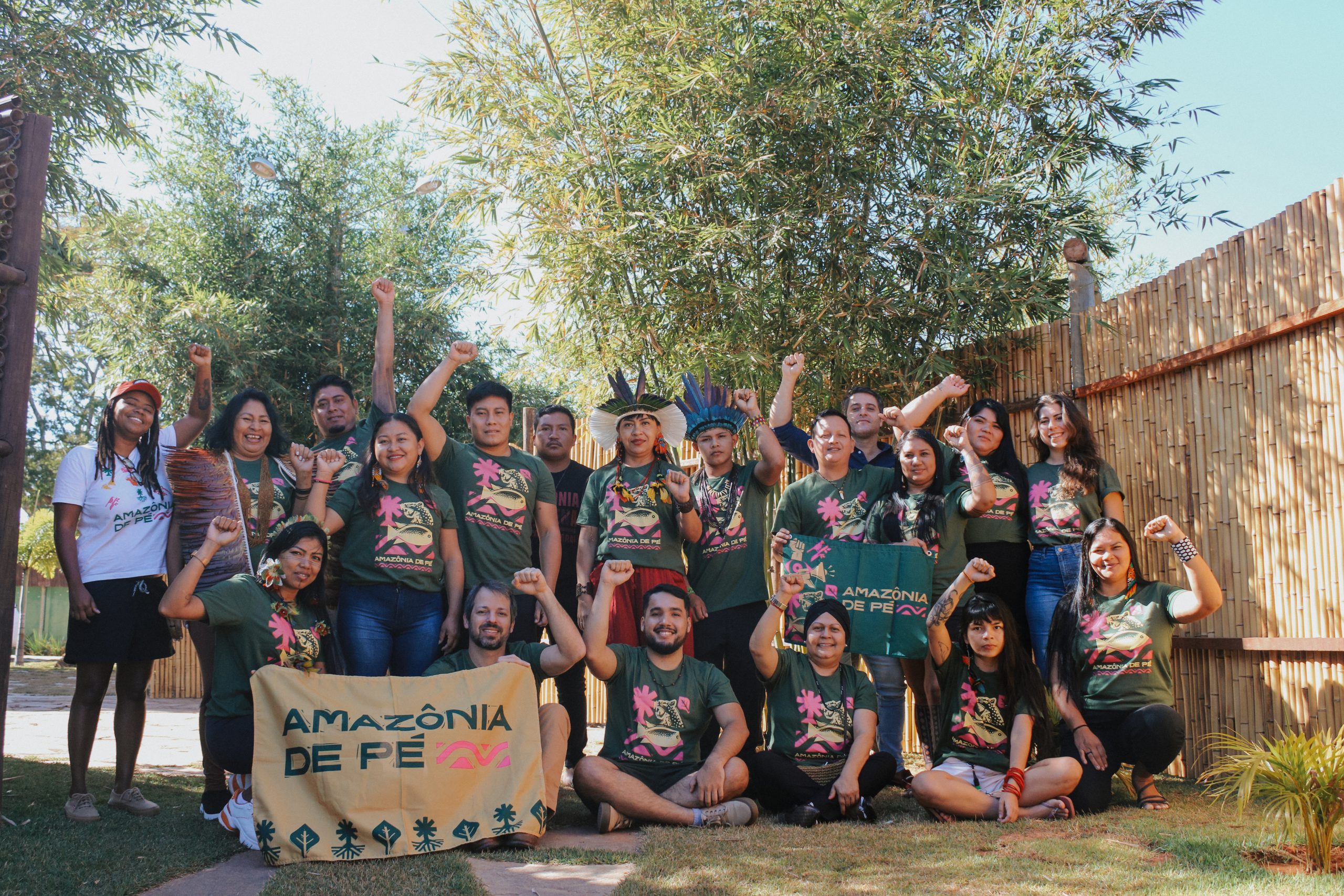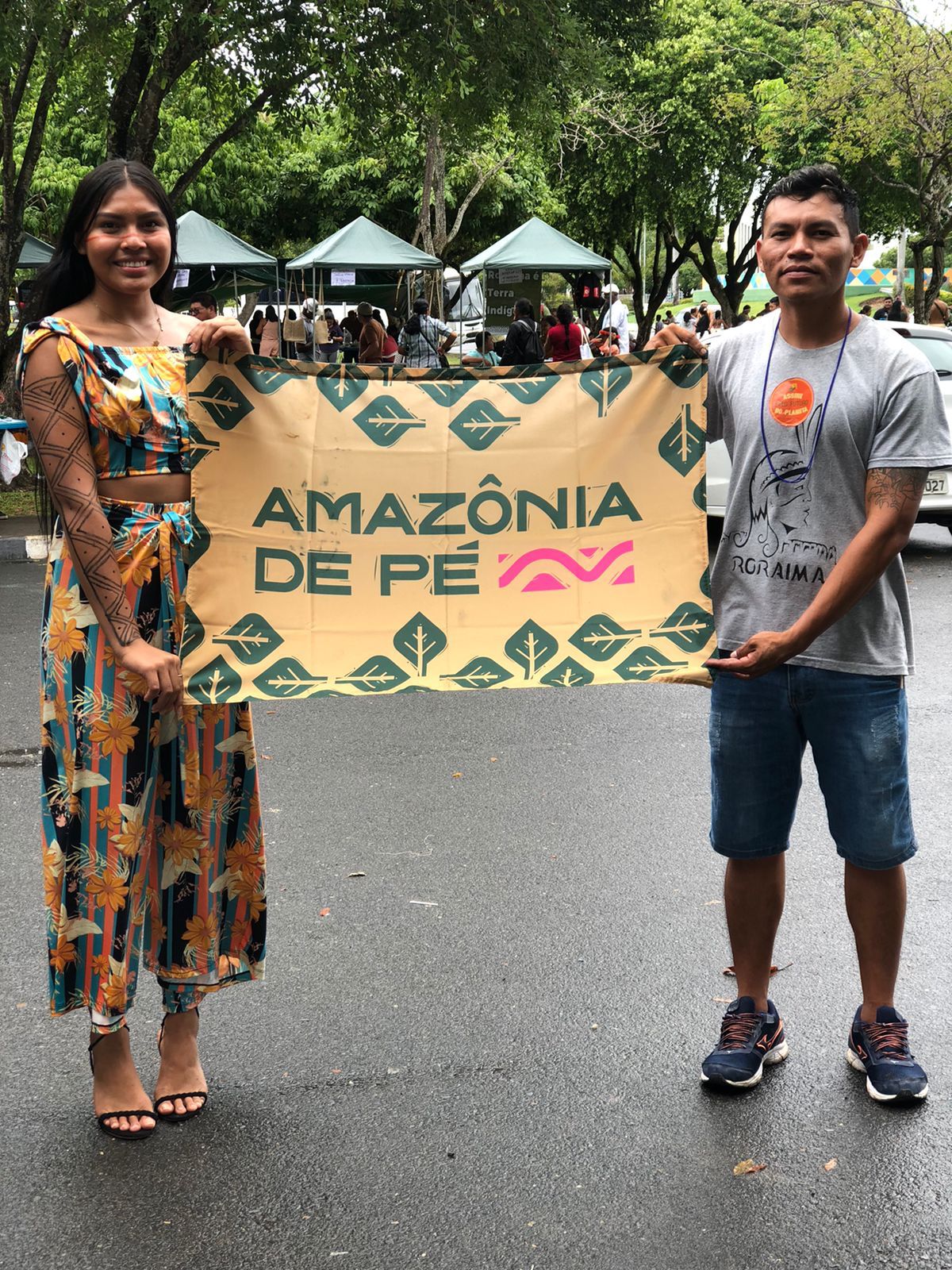An entire country to maintain the standing Amazon


An entire country to maintain the standing Amazon
People can save a forest. And it is their responsibility to save the forest that stores 49 billion tons of carbon* and influences the climate of the entire planet. These are the certainties of the Amazônia de Pé [Standing Amazon], which is a mobilization that takes place in the five regions of Brazil in order to protect the Amazonian biodiversity, populations, cultures, and ancestries.
The movement, which has iCS as one of its funders, began as a campaign by NOSSAS, which is a non-profit organization that won the Skoll Award for Social Innovation in 2022. It has grown into a coalition with more than 316,000 activists and 300 organizations, which include indigenous groups, quilombolas, extractivists, riverside communities and cultural collectives, from the student movement, the periphery, education, science and specialists in conservation.

Just as the Brazilian biomes are interconnected and what happens in the largest tropical forest in the world affects others, Amazônia de Pé emulates this domino effect in the social mobilization for the population to engage in environmental issues. In practice, the more Brazilians are aware about and alert to what it means to maintain the preservation of the Amazon, the more likely that tangible changes will be achieved that benefit the environment.
Conservation is the law here
Based on the exchange of data and knowledge that this national web for the environment facilitates, the movement has proposed a Popular Initiative Bill (PLIP) that aims to allocate undesignated public forests in the Legal Amazon to be protected by the traditional peoples and conservation units.
“We know that the indigenous territories are the most conserved areas in the country. In a context of accelerated deforestation due to agribusiness and mining, allocating lands to those who have historically proven that they know how to care for them is essential to maintain the standing forest,” says the communication manager of the movement, Catarina Nefertari.

default
The total undesignated area represents one third of the forests of the Amazon. And around half of the illegal deforestation in the biome takes place precisely in these public lands.
Legally, there are two ways to guarantee that the allocation of the public forests happens: through presidential decrees or bills. Amazônia de Pé followed the second option and was benefited by the first. In September 2023, President Lula decreed the allocation of 11 million public hectares in the biome for conservation units and indigenous territories. In this way, the movement was 20% closer to the goal of 57 million protected hectares.
How is it achieved?
The PLIP is a mechanism guaranteed by the Constitution, for civil society to present bills to be processed in Congress. To be accepted in the Chamber, the project must follow some rules, the most significant of which is the physical signature of 1% of the electorate of the country, i.e., 1.5 million Brazilians from different states. Although legally established, the PLIP is not common. This would be only the fifth PLIP in history – before it, there were the laws for heinous crimes (Law 8930 /94, known as the Daniella Perez law), the law to combat vote buying (Law 9840 /99), the creation of the National Fund for Popular Housing (Law 11124 /2005) and the Clean Record Law (Complementary Law 135/2010).
“We have not yet reached the required number of signatures and there is still a long journey ahead. But we know how complex this in-person mobilization is and the strength that engagement in the streets can generate,” says Catarina. At the moment, in addition to the support of the partner organizations, 20,000 volunteers are collecting signatures for the PLIP in more than 100 spots across Brazil (see below for the location near you: https://assine.amazoniadepe.org.br/#block -41394 ).
Climate hive
In order to strengthen the regional action, a program that trains leaders, develops engagement strategies and promotes local coordination was created. These leaders are responsible for the mobilization of volunteers from the north to the south of the country and are affectionately known as “pollinators.” In 2023, the first edition of the training took place, and new annual editions are planned with the aim of supporting one leader per state – 27 young people per year and 100 leaders in total by 2026.

Speaking of training, ecological education and cultural appreciation are important aspects of the Amazônia de Pé. In 2022, the debut of the program Amazônia de Pé nas Escolas [Standing Amazon in the Schools] trained educators and students in 296 schools. The following year, in partnership with the National Union of Students, the program reached higher education and involved 100 universities in debates about the protection of the forests and the Temporal Framework, which is a legal thesis according to which indigenous people would have the right to the land they occupied on October 5, 1988, when the current Brazilian Constitution was adopted. In 2024, the program Amazônia de Pé nas Escolas de Aldeias [Standing Amazon in the Village Schools] was launched, which was focused on climate education, reaching more than 900 indigenous children.
Amazon on the agenda
For the Amazônia de Pé movement, preserving the Amazonian biodiversity also means protecting the existing culture in the biome. Since 2022, September 5 has become synonymous with the Virada Cultural Amazônia de Pé [Standing Amazon Cultural Event]. It is a festival with cultural activities to raise awareness about deforestation and the climate crisis and occurs simultaneously in hundreds of places across the country and the world. The first edition had 600 actions, and the second edition had more than 450 actions, which included the protest #MarcoTemporalNÃO during the debates in the National Congress and in the Federal Supreme Court about the Temporal Framework, and a festival in Alter do Chão, in the Borari Indigenous Territory.
Above all, the desire to celebrate Amazonian life is an urgent desire to preserve it.
* Data from the Amazon Environmental Research Institute (Ipam)
